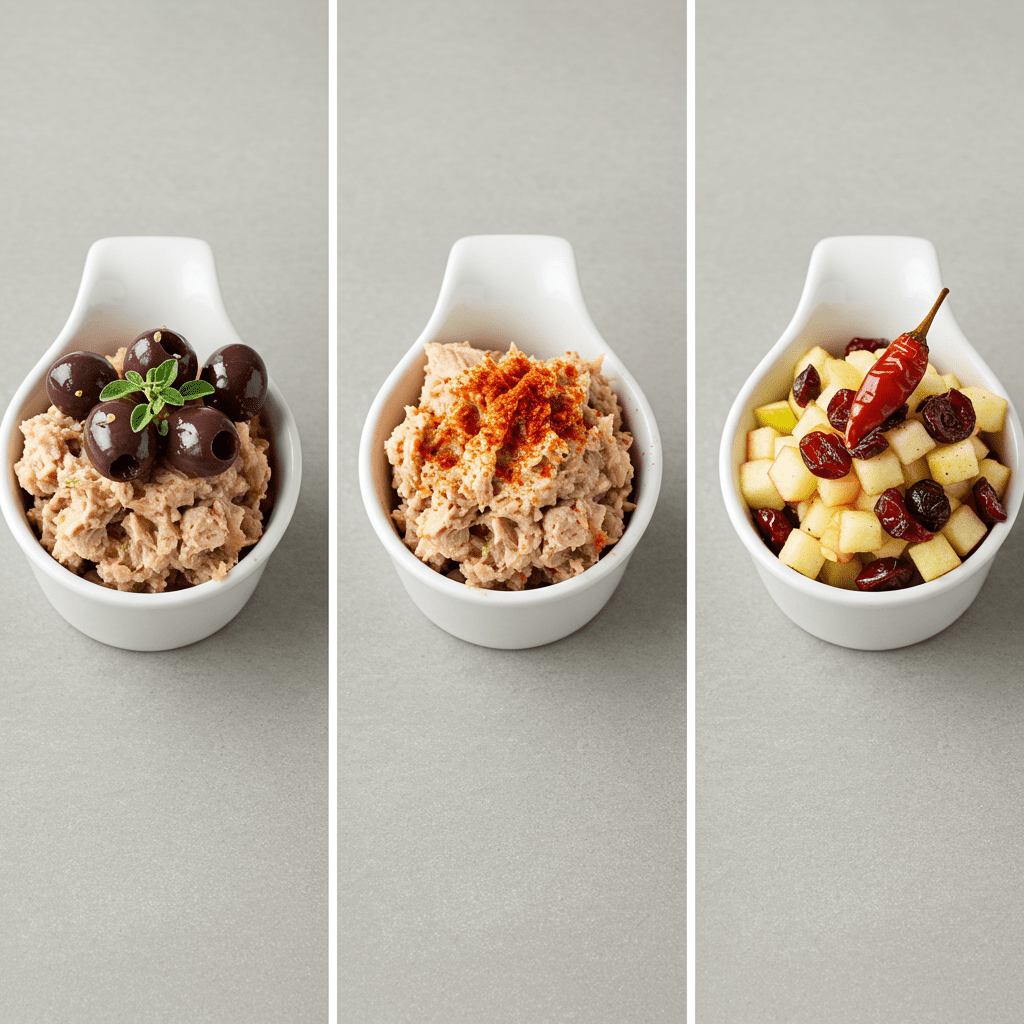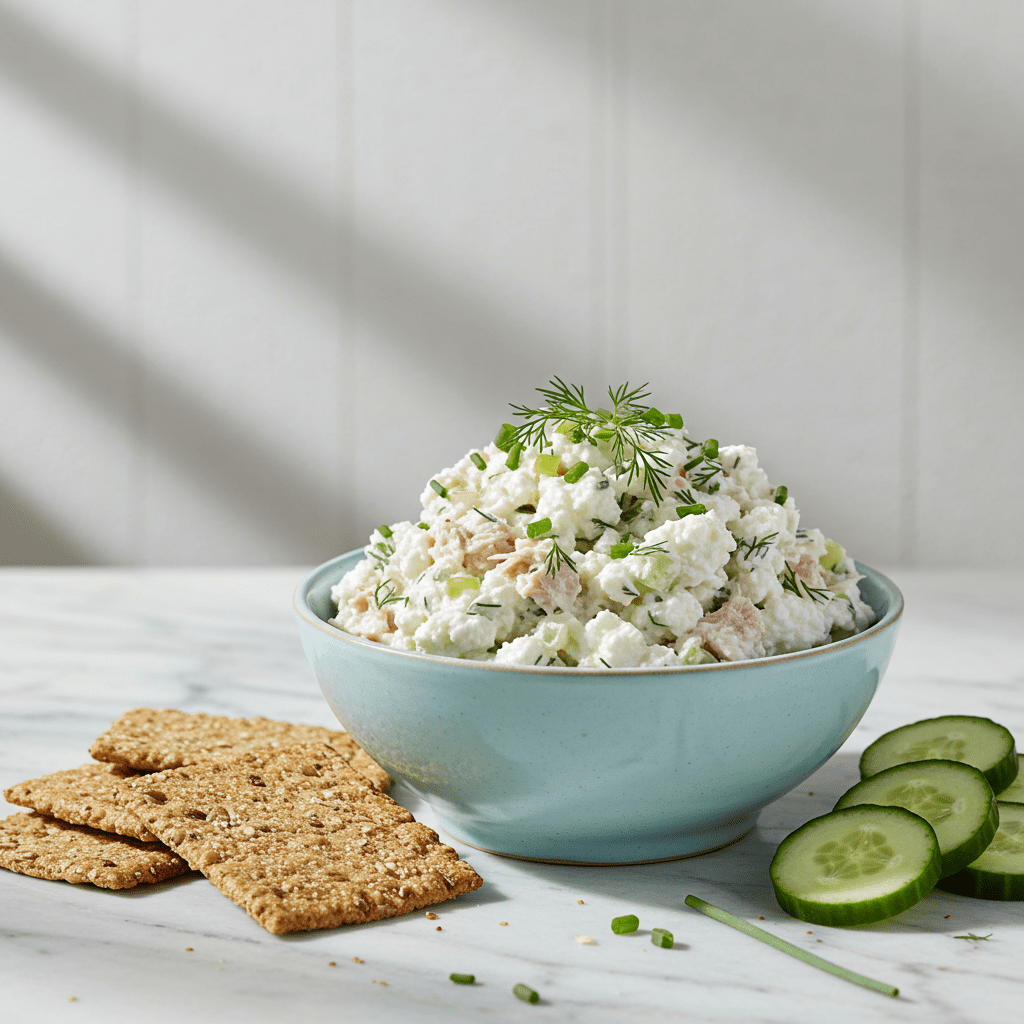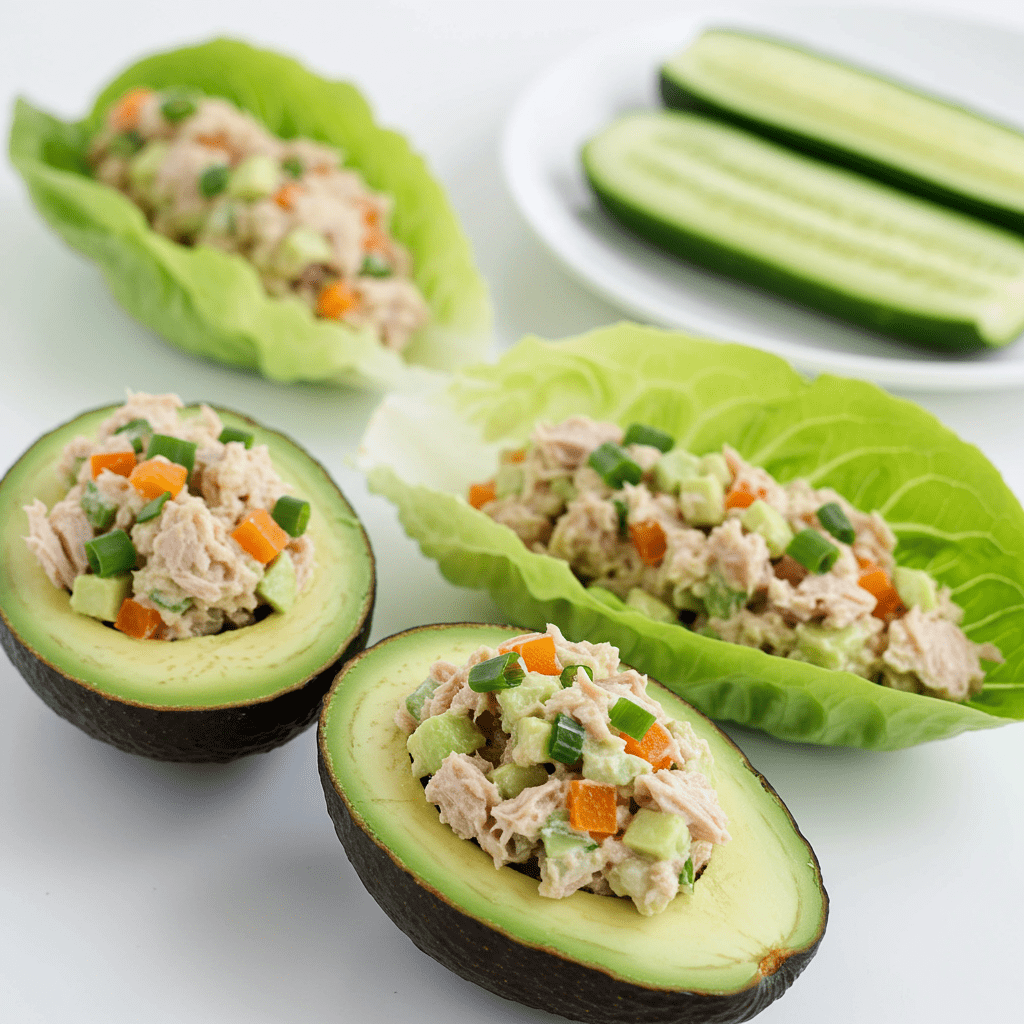The High-Protein Tuna Salad You’ll Actually Crave

Let’s be honest, finding a lunch that’s quick, healthy, and genuinely satisfying can feel like a challenge. We often turn to old standbys, but what if a simple swap could transform a classic comfort food into a nutritional powerhouse?
That’s exactly what happens when you replace the mayonnaise in tuna salad with creamy, blended cottage cheese. This recipe isn’t just a low-fat alternative; it’s a significant upgrade.
You get a massive protein boost that crushes hunger, a creamy texture without the heaviness of mayo, and a bright, fresh flavor that will make this your new go-to lunch.
- Why Swap Mayo for Cottage Cheese Anyway?
- What Makes This Tuna Salad So Good for You?
- How to Choose the Best Ingredients
- Should I Worry About Mercury in Tuna?
- The Easiest High-Protein Tuna Salad Recipe
- How to Serve Your Tuna Salad (Beyond the Sandwich)
- Smart Meal Prep and Storage
- Easy Variations to Keep Things Interesting
- Conclusion
Why Swap Mayo for Cottage Cheese Anyway?

The switch from mayonnaise to cottage cheese is about more than just cutting calories; it’s a strategic nutritional upgrade. As a registered dietitian, I’m always looking for simple swaps that deliver big benefits.
Mayonnaise is an emulsion of oil, egg yolk, and an acid, meaning it’s primarily fat. While not inherently ‘bad,’ it offers little in the way of protein or micronutrients.
A typical two-tablespoon serving of full-fat mayo contains around 180-200 calories and 20 grams of fat, with virtually zero protein. In contrast, a half-cup of 2% cottage cheese provides about 90 calories, 2.5 grams of fat, and a whopping 12-14 grams of high-quality casein protein.
This type of protein digests slowly, which research from the British Journal of Nutrition shows helps promote a longer-lasting feeling of fullness, or satiety. This simple exchange transforms your tuna salad from a high-fat condiment carrier into a balanced, protein-forward meal that works harder to keep you energized and satisfied through the afternoon.
What Makes This Tuna Salad So Good for You?

Beyond the protein, this tuna salad is packed with nutrients that support overall wellness. Tuna is one of the best dietary sources of omega-3 fatty acids, specifically EPA and DHA, which are crucial for brain health and reducing inflammation.
The American Heart Association recommends eating fish at least twice a week to support cardiovascular health. Cottage cheese brings its own set of benefits.
It’s an excellent source of calcium for bone health, phosphorus for energy metabolism, and selenium, a powerful antioxidant. It also contains B vitamins, particularly B12, which is essential for nerve function and the formation of red blood cells.
By combining these two ingredients, you’re creating a synergistic meal that supports muscle maintenance, brain function, bone density, and sustained energy—far more than a traditional tuna sandwich can claim.
How to Choose the Best Ingredients

The quality of your tuna salad depends entirely on the quality of your ingredients. Here’s what to look for:
- Cottage Cheese: For the creamiest, richest result, I recommend using a whole milk (4% milkfat) or 2% milkfat small-curd cottage cheese. Brands like Good Culture or Daisy are excellent because they have a simple ingredient list without fillers. If you are watching fat intake, a non-fat version will work, but the final texture may be slightly less creamy.
- Tuna: The type of tuna you choose matters for both flavor and health. ‘Chunk light’ tuna, typically made from skipjack, has a softer texture and is lower in mercury than ‘solid white’ or albacore tuna. When possible, look for tuna packed in olive oil, as it offers a richer flavor and preserves more of the fish’s natural omega-3s compared to water-packed varieties, though water-packed is a great lower-calorie option. Look for brands that practice sustainable, pole-and-line fishing.
- Fresh Components: Don’t skimp on the fresh ingredients! Crunchy celery, sharp red onion, and tangy dill pickles (or cornichons) provide essential texture and cut through the richness. Fresh herbs like dill or parsley and a squeeze of real lemon juice are non-negotiable—they brighten the entire dish and add a layer of freshness that dried herbs can’t replicate.
Should I Worry About Mercury in Tuna?

This is a valid and important question. Mercury is a naturally occurring element that can accumulate in larger, longer-living fish like tuna.
However, for most people, the health benefits of eating fish far outweigh the potential risks. The key is moderation and making informed choices.
The U.S. Food and Drug Administration (FDA) provides clear guidelines to help.
They classify ‘canned light’ tuna (skipjack) as a ‘Best Choice,’ recommending that adults can safely enjoy 2-3 servings per week. Albacore (‘white’) tuna has higher mercury levels and is listed as a ‘Good Choice,’ with a recommendation of one serving per week.
Following this guidance allows you to reap the benefits of tuna’s omega-3s while minimizing mercury exposure. This is especially important for pregnant people, those who might become pregnant, and young children.
The Easiest High-Protein Tuna Salad Recipe

Prep time: 10 minutes
Servings: 4
Ingredients:
- 3 (5 oz) cans of chunk light or albacore tuna, drained well
- 1/2 cup 2% or 4% small-curd cottage cheese
- 1 large stalk celery, finely minced
- 1/4 cup red onion, finely minced
- 3 tbsp dill pickles or cornichons, minced
- 1 tbsp Dijon mustard
- 1 tbsp fresh lemon juice
- 1 small garlic clove, grated or microplaned
- 2 tbsp fresh dill or parsley, chopped
- 1/4 tsp sea salt
- 1/2 tsp black pepper
Instructions:
- Create the Creamy Base: In a small blender or using an immersion blender, blend the cottage cheese until it’s completely smooth and creamy, resembling the consistency of Greek yogurt. This step is key to avoiding the curd texture.
- Combine Ingredients: In a medium bowl, flake the well-drained tuna with a fork. Add the blended cottage cheese, minced celery, red onion, pickles, Dijon mustard, lemon juice, grated garlic, and fresh herbs.
- Mix and Season: Gently stir everything together until just combined. Over-mixing can make the tuna mushy. Season with salt and pepper, and taste. Adjust with more lemon juice, salt, or herbs as needed.
- Serve or Store: Serve immediately or cover and refrigerate for up to 30 minutes to allow the flavors to meld.
How to Serve Your Tuna Salad (Beyond the Sandwich)

While a classic tuna salad sandwich on whole-grain bread is always a winner, this versatile recipe shines in many other ways. Here are a few of my favorite ways to serve it for a healthy, satisfying meal:
- Stuffed Avocados: Halve an avocado, remove the pit, and fill each half with a generous scoop of the tuna salad for a meal rich in healthy fats and protein.
- Lettuce Wraps: Use large, crisp lettuce leaves like butter lettuce or romaine as a low-carb, fresh ‘wrap’ for the tuna salad.
- Cucumber Boats: Halve a cucumber lengthwise and scoop out the seeds. Fill the hollowed-out center with the tuna salad for a crunchy, refreshing snack.
- On a Salad Platter: Serve a large scoop in the center of a platter surrounded by cherry tomatoes, sliced cucumbers, bell pepper strips, and perhaps some crispy smashed broccoli for a complete lunch spread.
- With a Baked sweet potato: The combination of a warm, fluffy sweet potato topped with the cool, creamy tuna salad is surprisingly delicious and incredibly filling. If you love creative potato dishes, you might also enjoy these savory onion soup potatoes as another comforting meal base.
Smart Meal Prep and Storage

This recipe is perfect for meal prep, but there are a few tricks to keeping it fresh and delicious. Once prepared, the tuna salad can be stored in an airtight container in the refrigerator for up to 4 days.
The flavors actually meld and deepen overnight, so it’s often even better on day two. One key tip: the celery will release water over time.
While this doesn’t spoil the salad, it can make it a bit looser. If you prefer a very thick salad, you can either stir it well before serving or pack your crunchy mix-ins (celery, onion) separately and combine them with the tuna-cottage cheese base just before eating.
This ensures maximum crunch and ideal texture every time.
Easy Variations to Keep Things Interesting

Once you’ve mastered the base recipe, feel free to customize it to your liking. Here are a few simple variations that work beautifully:
- Mediterranean Style: Omit the pickles and add 2 tablespoons of chopped Kalamata olives, 1 tablespoon of capers, and a pinch of dried oregano.
- Spicy & Smoky: Add 1/2 teaspoon of smoked paprika and a finely minced chipotle pepper in adobo sauce for a smoky kick.
- Sweet & Crunchy: For a sweet and savory twist, omit the pickles and add 1/4 cup of diced apple (like Honeycrisp) and 2 tablespoons of dried cranberries.
- Extra Protein & Fat: Add one or two chopped hard-boiled eggs and a quarter of a diced avocado for an even more substantial, nutrient-dense meal.
Conclusion
Making the switch to a cottage cheese tuna salad is one of the easiest and most impactful upgrades you can make to your lunch routine. It delivers on every front: superior nutrition with a huge protein boost, a wonderfully creamy texture, and a fresh, satisfying flavor that you can customize in endless ways.
Whether you’re an athlete looking for post-workout fuel, a busy professional needing a quick meal-prep solution, or simply someone trying to eat a little healthier without sacrificing taste, this recipe is for you. Give it a try—you’ll be amazed at how a simple swap can create a meal you not only feel good about but also genuinely crave.

[…] Use it in place of sour cream on tacos or baked potatoes, or swap it for mayonnaise in a high-protein tuna salad to lower fat and boost […]